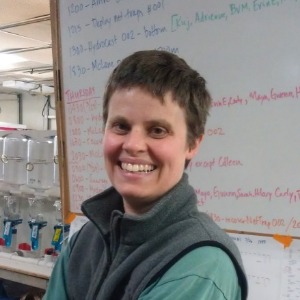Mar 31, 2022
Version 2
Collecting samples for Dissolved Organic Carbon (DOC) analysis V.2
This protocol is a draft, published without a DOI.
- 1Woods Hole Oceanographic Institution
- Kujawinski Lab

Protocol Citation: Krista Longnecker 2022. Collecting samples for Dissolved Organic Carbon (DOC) analysis. protocols.io https://protocols.io/view/collecting-samples-for-dissolved-organic-carbon-do-b6xrrfm6Version created by Krista Longnecker
License: This is an open access protocol distributed under the terms of the Creative Commons Attribution License, which permits unrestricted use, distribution, and reproduction in any medium, provided the original author and source are credited
Protocol status: Working
We use this protocol and it’s working
Created: March 31, 2022
Last Modified: December 18, 2023
Protocol Integer ID: 60113
Abstract
This protocol describes collecting samples for Dissolved Organic Carbon (DOC) analysis. Dissolved organic carbon is operationally defined as the material that passes through a filter with a known pore size. Part numbers are in the materials section for GF/F filters (nominally 0.7 um) and PTFE Omnipore filters (we use 0.2 um for this protocol, many sizes are available).
This protocol assumes you are using Niskin bottles to sample water at a desired depth.
Materials
40 ml EPA vials with Teflon-lined septa, e.g., Fisher part number 03-339-14A
Teflon-lined septa are also required for the autosampler. Septa are not reusable, but the outer ring holding the septa onto the vial can be reused.
Part numbers for the Telfon-lined septa: from Thermo (B7995-24) or from Restek (24694)
The open top caps are 24-400 caps, come from Thermo (B7807) or (5310-24W-SB)
Polycarbonate 47 mm filter rigs, part number #1119
Whatman GF/F filters, part number 1825-047
or
Millipore Sigma Omnipore hydrophilic PTFE membranes, part number JHWP04700 (0.45 um pore size) or JGWP04700 (0.2 um pore size)
Silicone tubing to connect polycarbonate filter holders to the Niskin bottle (if sampling from CTD/rosette)
Pipet for 40 µL of volume and tips.
Tweezers for filters
Concentrated hydrochloric acid (12 M) in glass bottle. Do not use HCl in plastic bottles. This means purchasing smaller glass bottles of HCl or purchasing trace-metal grade HCl in Teflon bottles.
Nitrile gloves
TOC analyzer: our lab uses a Shimadzu TOC-VCSH total organic carbon analyzer with a TNM-1 module for total nitrogen
Collecting samples for Total Organic Carbon (TOC) analysis
Collecting samples for Total Organic Carbon (TOC) analysis
4h
4h
The glass vials need to be combusted before use.
Set aside the caps that were sent with the vials because they cannot be combusted.
Wrap packs of glass vials in foil prior to combusting them.
Combust the glass vials at 450 °C for at least 04:00:00 .
4h
If you are using GF/F filters, they also need to be combusted before use. It is easiest to combust them in batches of ~25 in foil-wrapped glass petri dishes.
Omnipore filters cannot be combusted and are used as is from the package.
Use electrical tape or lab tape to label the glass vials. Do not use too much tape as that causes problems with inserting the vials into the autosampler. We prefer 1/2 inch label tape, placed towards the top of the vial. Be sure to wrap the tape all the way around the vial in order to prevent the labels from falling off during sample processing.
In the field, use gloves for all sampling.
Place one filter (GF/F or Omnipore) into the polycarbonate filter holder. Make sure the filter is centered in the holder before tightening the two halves of the filter holder.
Attach the filter holder to the Niskin using the silicone tubing.
Open the top valve on the Niskin and press in the sampling nipple to begin the flow of water.
As needed, vent air out of the filter holder using the valve on the top of the filter holder.
Rinse the 40 ml glass vials 3x with sample water.
After rinsing, fill each vial up to the shoulder with the sample (40 mL ).
Add 40 µL of 12 M hydrochloric acid to this vial.
Store the acidified samples at 4 °C in racks/boxes that keep vials from knocking into each other.
Note
One good idea is to process several MilliQ samples in the field the same way the water samples are processed to test for potential contamination in the field.
